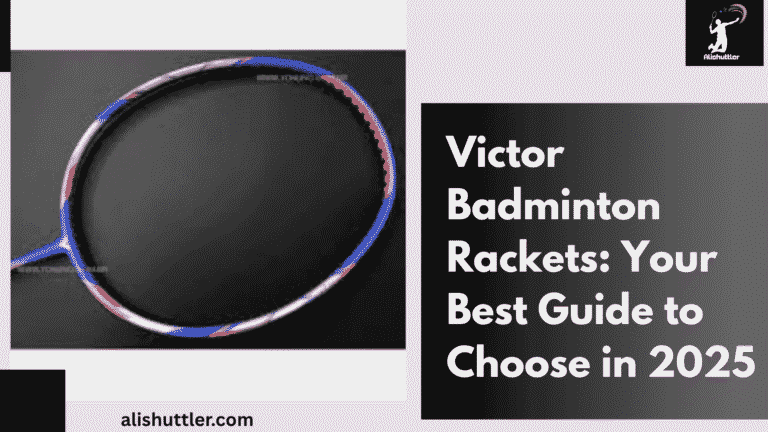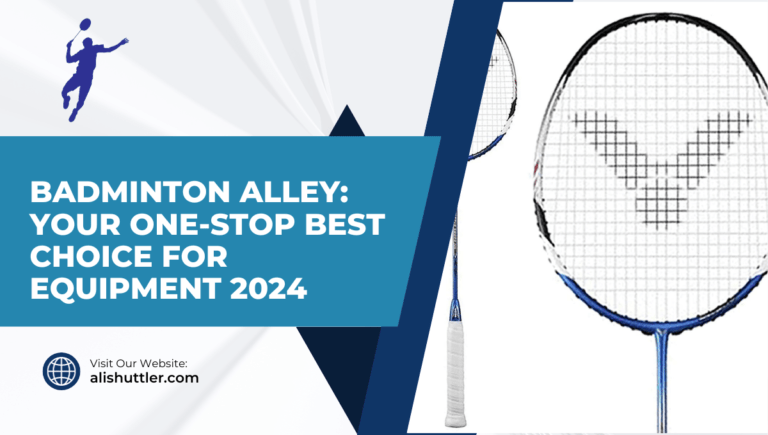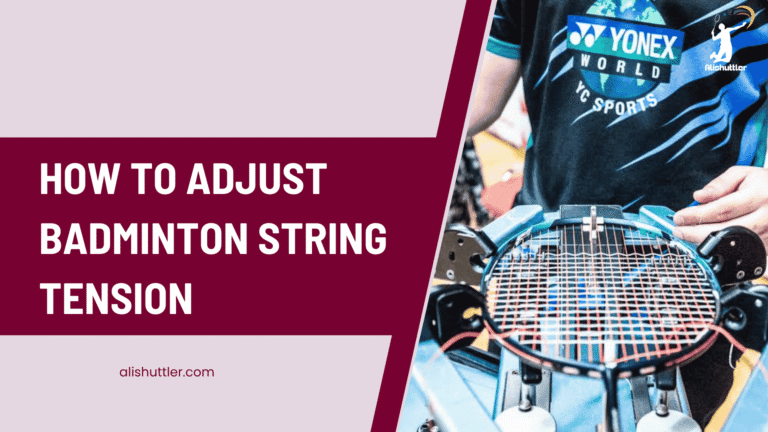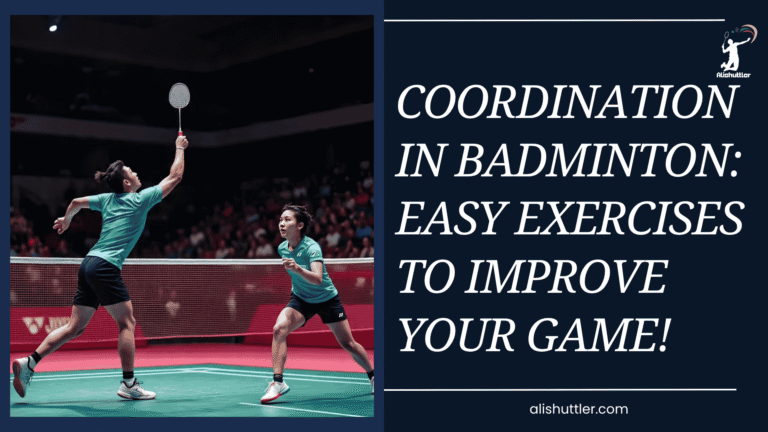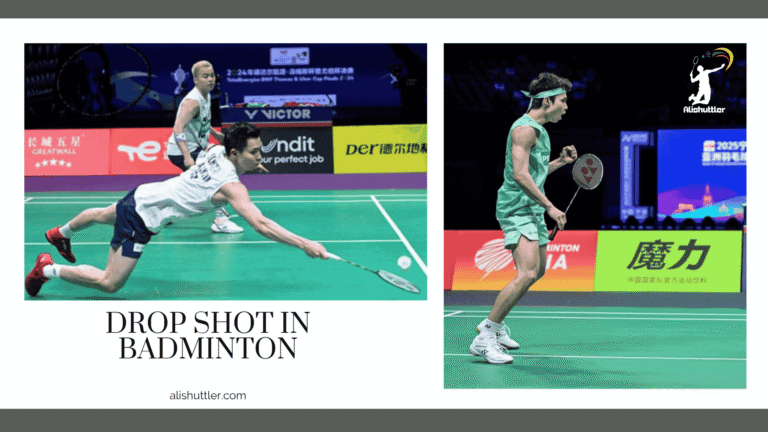Here’s how to make badminton shoes grip better: clean their soles using a damp cloth and some mild soap to remove dust and dirt.
Sticky mats at courts keep soles tacky. Some players resort to grip waxes such as shoe grip spray; however, make sure that it’s court-friendly.
If the grip is good, there’s less slipping, so feet stay grounded during quick moves.
Here’s a guide on how to make your badminton shoes grip better.
Grip Fundamentals
Grip in quality badminton shoes is influenced by the sole material, tread design, and the badminton court surface. Each component collaborates to keep badminton players moving quickly and remain sure-footed. Understanding how these fundamentals interplay can make all the difference in performance.
Sole Material
- Gum rubber soles are frequently chosen for badminton. This is because gum rubber adheres nicely to pristine indoor courts, resulting in superior grip and rapid stopping. These soles provide excellent feedback, allowing players to respond quickly on court.
- Sports shoes for running or other sports won’t work well on badminton courts. Regular sneakers/trainers can slide, particularly on polished floors.
- The life of a sole counts as well. Harder rubbers tend to have longer lifespans, but can lose a bit of tackiness. Softer gum rubber gives out a little faster but can stick at first.
- Non-marking soles are essential for indoor play. They prevent floors from scuffs and marks, yet maintain great grip. Some players wipe their soles with a wet rag or soap and water to maintain that grip. Although table tennis rubber cleaner or even a little alcohol will bring back the grip, your mileage may vary from shoe to shoe.
Tread Design
There are tons of tread patterns available. Some have thin, tight lines, others have deep channels or a honeycomb appearance. Players who favor rapid side-to-side movement tend to opt for soles with aggressive tread. This helps grip the court during quick lateral shifts and sudden stops.
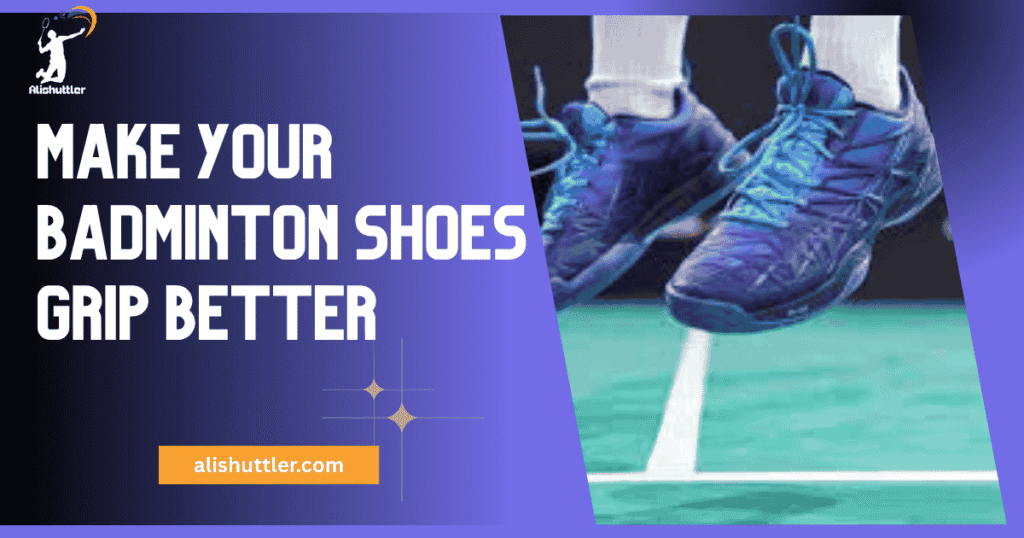
Deep grooves provide extra grip on slick courts. They can assist in driving in and arresting sudden slips. Short, shallow patterns are great on extremely clean floors, but can collect dust that reduces grip. Players typically try a couple tread shapes to find which fits their footwork and courts best.
It’s easy to add grip – just wipe the soles with a damp towel. This wipes away dust and restores the tread’s bite. A few even a dab of hairspray, although not required. Wiping the court with a wet towel assists, particularly in dusty gyms.
Court Interaction
Court surface counts. Most indoor courts utilize a synthetic mat or polished wood. Synthetic mats provide increased grip and keep down dust, therefore shoes wear better longer. Wood floors can get slick from sweat or dust, so cleaning is key.
Players occasionally chalk up on hands or shoes, but not all gyms permit this. Wristbands can keep sweat off the palms, keeping both your shoe and your hand grip lasting longer. Overgrips on racket handles can assist if the original grip is tired.
Adapting your movement can assist on difficult terrain. On slick floors, shorter steps and a lower stance reduce slips. On sticky mats, daily cleaning prevents shoes from grabbing too much and bogging you down.
Why Grip Fails
Quality badminton shoes require clean bottoms, unscuffed materials, and dry courts for optimal grip. When grip is lost due to dust, worn soles, or wet conditions, it leads to slipping, slower movements, and a heightened risk of injury. Understanding these factors is crucial for badminton players to maintain performance.
| Cause | Effect on Grip |
|---|---|
| Dust and dirt | Less traction, more sliding |
| Sole oxidation | Harder, less tacky soles |
| Wear and tear | Smooth, worn soles |
| Heat exposure | Material breakdown, less grip |
| Moisture/sweat | Slippery surface, less friction |
Surface Dust
Dust on shoe soles is among the primary reasons grip fails. It adheres to the rubber sole and forms a slick film that decreases friction. Even minute specks of dust can diminish grip, particularly on synthetic or wood courts.
Wiping soles down with a moistened towel or cloth assists, but steer clear of aggressive soaps or chemicals, as they can deposit residue that damages grip even more.
To maintain grip, it’s essential to wipe shoe out of soles with a wet rag every game. Avoid playing on courts where dust builds up fast. Inspect for earth wedged in the tread and clean it out prior to matches. Maintain a cleaning regimen to insure your shoes look their best.
Sole Oxidation
Store shoes in cool, dry spots to slow down oxidation of the rubber soles. Heat and sunlight speed up this process, making rubber harder and less tacky. When soles lose tack, they can feel sticky but not grippy, causing slips.
Avoid leaving shoes in hot cars or near heaters. Know the durability of your shoe’s sole. Most badminton shoes last 6–12 months of steady use. Look for color changes or dry cracks, which indicate that the grip is deteriorating.
Once oxidation sets in, grip falls off and replacement is the only real solution.
Wear And Tear
Some of us have soles or treads on our shoes that wear away — particularly if we walk on coarse floors or outside. When the soles get thin, then the traction starts to slip, making those rapid fire moves more difficult and more dangerous.
Keeping your badminton shoes on the indoor court can make them last. Inspect the sole’s tread for slick areas or balding. When you see these, grip is already well beneath safe levels.
Putting money into good shoes from the beginning can translate to less replacements and greater grip long-run.
Moisture Issues
Keep shoes dry, as sweat or wet floors make soles slick quick. Bring a damp towel for fast wipes of the hands during games to maintain grip. Say no to wet courts, grip will drop regardless of shoe.
Dry shoes thoroughly after use to protect the sole from deteriorating.
Reviving Shoe Grip
Badminton shoes lose grip over time from dust, sweat, and worn-out soles, but with proper shoe maintenance, you can revive the traction of your quality badminton shoes. Critical moves include deep cleaning, regular wiping, and applying grip spritz.
- Remove loose dirt using a dry towel before washing
- Wash soles with warm soapy water and a soft brush.
- Focus on grooves and corners where debris collects
- Rinse with clean water, then allow your shoes to dry completely in the air
- Deep clean again every few weeks, depending on your playing frequency.
1. Deep Cleaning
A soap/warm water mix and soft brush works well to remove caked-on grit embedded in the grooves. Dirt buries itself between the treads in miniscule cracks and can make shoes slick. Gently scrub to prevent the rubber from thinning too quickly.
Some players apply table tennis rubber cleaners or alcohol to increase grip, since it makes rubber sticky once more. Following cleaning, always allow the shoes to air dry out of direct sunlight or heat.
Deep clean on a schedule that fits your shoe usage. If you play a few times a week, attempt a good scrubbing once every two weeks. For infrequent players, once a month is probably sufficient.
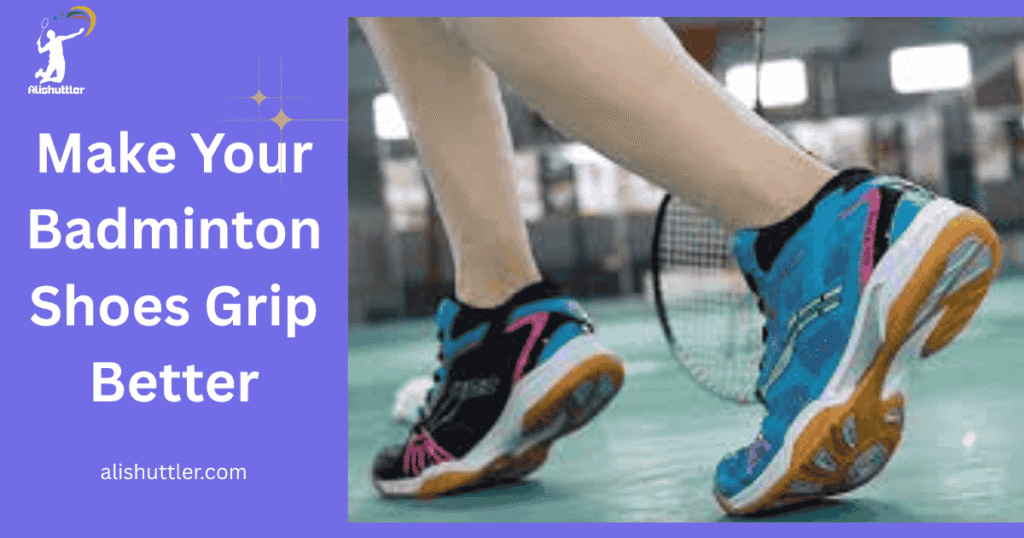
Deep cleanings keep the soles soft and snappy. Sanding the soles with coarse sandpaper, then wiping with a wet towel, can revive grip.
2. Routine Wiping
Wipe dust off with a damp towel before and after each match. This restores the shoes by lifting surface dirt that makes them slick. Regular wiping can be incorporated into your pre-game prep or done during breaks.
A traction mat at courtside is great for quick dabs, particularly in muggy weather. If you lack a towel, sliding one shoe over the other or using your hand to brush the outsole acts as a quick bandage.
This ritual has your shoes primed for every game.
3. Safe Grip Enhancers
A lot of guys seek a grip jump by using grip gels, sprays, or chalk alternatives. A quick spritz of hairspray or a thin layer of grip gel can provide tack for awhile. Experiment to find what fits your court and style.
Always adhere to the manufacturer’s directions and don’t overuse, which can potentially damage the rubber or cause you to depend on boost too frequently.
Some guys chalk, or “chalk alternative,” it out to regain grip when shoes turn slick mid-match. Sample these juices judiciously and when necessary.
4. Sole Conditioning
Conditioning the soles with rubber care products keeps them soft and flexible. Use a little, after deep cleaning, and let it absorb prior to use.
Be on the lookout for wear or dryness, and reapply as necessary. Conditioning stops the rubber from cracking and maintains traction.
5. Proper Drying
Let shoes dry completely before storing. Stuff with a shoe tree or newspaper to pull out additional moisture.
Avoid drying shoes in direct sunlight or on heaters, it can damage the rubber. Keep them in a well-ventilated area.
Proactive Maintenance
Badminton shoes lose grip quickly if you don’t maintain them properly. With consistent shoe maintenance, you can extend the lifespan of quality badminton shoes and maintain solid grip on court surfaces. Simple practices—like washing, intelligent storage, and quality insoles—greatly help all types of athletes.
Court-Only Use
Restricting your badminton shoes to indoor courts is one of the finest methods to maintain sole integrity. Dirt, stone chips, and oil from pavement adhere to the sole and gum up the treads, which kills traction quick. Even a brief walk outside will stamp dust deep into the rubber, preventing the sole from grabbing the court.
If you wear your badminton shoes to run errands or play other sports, you’ll wear down the rubber tread, which can result in slips and reduced control on the court. A lot of players store a mini shoe bag in their kit just for their court shoes. This separates them from street shoes and helps prevent cross-contamination.
Teaching teammates or friends about court-only rules can help everyone’s shoes last longer.
Correct Storage
To maintain your quality badminton shoes, store them in a cool, dry place away from direct sunlight. Excessive heat or sunlight can degrade the glue, causing the rubber to harden and lose its tack. After playing, allow your badminton shoes to breathe before placing them in your bag. Leaving them in an open trunk or a breezy corner at home will help evaporate sweat and prevent moisture retention.
It’s essential to pack your shoes in a ventilated bag rather than a sealed plastic one to promote air circulation and combat odors. Avoid piling heavy gear on top of your shoes, as this can squash the heel and toe box, damaging the shape of your Badminton Shoes Grip over time.
Organizing your shoes on neat racks or in cubbies simplifies finding your court shoes for the next session. This practice not only keeps your best Badminton Shoes Grip in good condition but also ensures they are ready for optimal performance during your next game.
Insoles Matter
- Gel insoles for shock absorption
- EVA foam insoles for lightweight support
- Orthotic insoles for custom arch support
- Anti-slip insoles for extra grip inside the shoe
- Sports-specific insoles made for badminton
Tattered insoles cause poor fit, less comfort, and may even diminish the way your feet push off the ground. Replace insoles if they appear flat, odoriferous, or lose form. Certain companies even manufacture insoles specifically for Badminton Shoes Grip, designed for swift directions and powerful halts.
Try a few varieties to see which best fits your arch and play style. Shun cookie-cutter pronouncements sometimes a blend of gel and foam is best for your feet.
Basic Cleaning and Hygiene
Scrub the sole with dish soap and a small bristle brush to remove dirt and grease. Sanitary wipe with bleach and alcohol can get dust out and kill germs. Take a paperclip with a wipe to clean deep treads. Use Lysol to spray the inside and then let your shoes dry to prevent bacterial build-up.
Charcoal bags keep shoes fresh by absorbing moisture and stinky odors. Clean your kicks and save money as the majority of players discover, their expensive-looking Badminton Shoes Grip only last ‘a season’ or a year!
The Player’s Role
Your habits as a player directly influence how badminton shoes stick to the court. Shoes alone are only half of it–the way a player moves, what they wear and how they care for their equipment all contribute to either solid footing or slipped steps. Badminton Shoes Grip problems can be associated with foot landings, moisture in the shoe, and even the court surface.
By observing these tendencies, players can optimize their style for more secure, consistent movement.
Footwork Technique
Solid grip begins with stable steps. By keeping your feet flat and distributing weight, you really enhance the performance of quality Badminton Shoes Grip. These fast moves, like stop-and-go and side steps, put the shoe’s traction to the test. Most of us have felt ourselves slip on sleek badminton courts, but adjusting foot placement can help.
Rapid side-to-side shifts indicate areas where shoe traction breaks down, particularly in high-speed rally situations. Agility drills, for example, ladder or cone exercises, train feet to land and push with balance. This maintains traction and slows slippage.
Eventually, bad lunges or weak foot placement can cause common wear, like ‘The Lunge Tear,’ on the shoe’s upper. By watching match videos or asking a coach, players can identify bad habits and correct them before they cause damage to their beloved sports shoes.
Sock Choice
Moisture-wicking socks, which draw the sweat off your feet, leave them dry and your shoes grippy. Cotton socks, however, capture moisture and frequently lead to inside slipping, particularly during lengthy games.
Experimenting with sock thicknesses can help. For others, thin socks let you get more feel, while thick ones provide cushion. Rubber gripped socks at the heel or forefoot provide additional stability from the inside, preventing the foot from shifting when making quick lunges.
Body Weight
Maintaining a healthy body weight equates to less weight bearing down on the shoe’s sole. Excessive weight can flatten traction designs, making the grip less effective as the tread wears. How weight shifts during movement, such as lunging or stopping, dictates Badminton Shoes Grip wear.
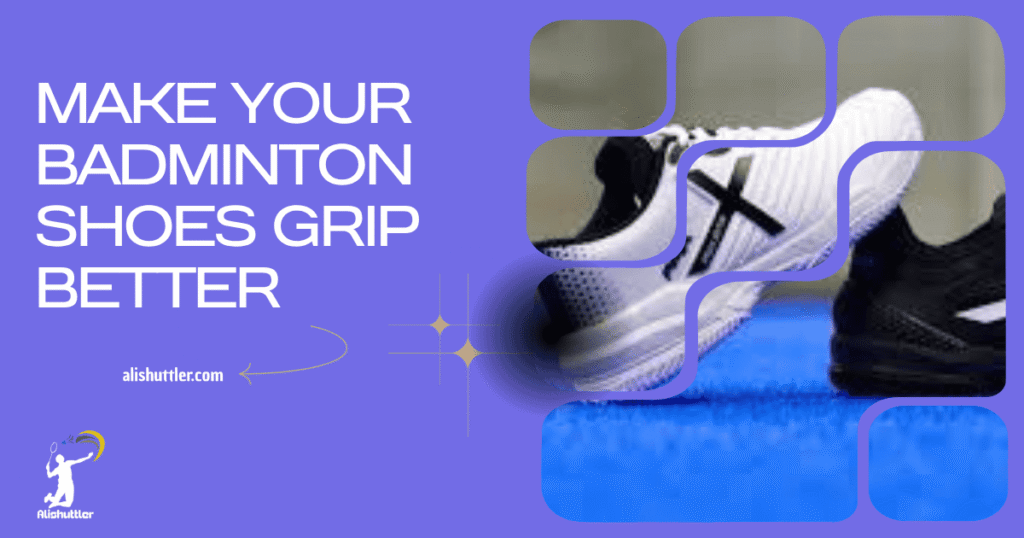
Players who balance their weight and don’t drop heavy, repetitive lunges extend their Badminton Shoes Grips life. Checking for weight fluctuations helps detect whether grip issues are related to worn-out shoes or shifts in the body.
Footwork Drills
Short, sharp drills condition muscles and increase foot speed. They assist players in responding to sudden shuttle movements and remaining light on their feet.
Flipping through drills, like agility ladders, develops quickness and imparts control. Over time, this eliminates undue stress on Badminton Shoes Grip. Frequent drills expose vulnerabilities in both form and equipment.
Drills aid acclimating to new or slippery court surfaces.
Replacement Signs
Badminton shoes aren’t immortal, and timing their replacement is the secret to maintaining good traction and comfort on the badminton court. Eventually, even with the best intentions, shoes wear out in play and safety-impacting ways. The key zones to observe are the soles, support, and in-game feel of the Badminton Shoes Grip.
Visible wear on the outsole is one of the earliest and most obvious markers. The outsole, usually made of gum rubber or similar materials, is what makes contact with the court. If you feel flat spots, slick areas, or delamination on the sole, this indicates that the grip is going to rip. Dust and dirt buildup can also cause the shoe to slip even if the rubber is still unworn.
Soaking it with light soap and water makes a difference, but once the rubber wears smooth or feels stiff, no amount of cleaning will restore grip.
Back and seat cushioning count significantly. Quality Badminton Shoes Grip have additional padding and support to account for lateral movements and sudden halts. When this support collapses, your feet or ankles may experience increased strain. Some signs include pain after playing or shoes that feel loose even when laced up tightly.
If you observe these areas of transformation, the backing is probably history, and it’s time for a new pair.
Decreasing grip effectiveness is another telltale indicator. If you sense your shoes begin to slip more or you can’t push off as quickly, the grip could be giving out. This can occur even if the shoes appear okay. For badminton players who play several times a week, shoes might last only six months before Badminton Shoes Grip and support begin to diminish.
Others who play less can rock shoes for a year and a half, but heavy use and deep lunges will reduce that. Alternating between two pairs of quality badminton shoes can make them last longer by giving them time to bounce back.
A simple table can help summarize when to replace shoes:
| Sign | What to Look For | Action Needed |
|---|---|---|
| Worn outsole | Smooth spots, faded pattern, peeling | Replace shoes |
| Less support | Loose fit, foot pain, less structure | Replace shoes |
| Slipping on court | Hard to stop or start, more slips | Replace shoes |
| Dirty outsole | Dust, dirt buildup on sole | Clean shoes first |
Final Thoughts
A good Badminton Shoes Grip lets you play safely and fast on the court. Shoes with fresh soles, the proper patterns and good maintenance wear best. Quick fixes, like a damp towel or grip spray, can be a lifesaver during a match, but true grip stems from consistent maintenance and monitoring your shoes for wear indicators.
Every step matters in lightning-quick games like Badminton Shoes Grip, so razor-sharp soles count. Grip slips, but savvy players check their shoes, clean frequently, and rotate pairs before trouble kicks in. For tighter play and fewer slips, treat your Badminton Shoes Grip like gear! Little bitty steps keep you at the top of your game. If you’ve got your hacks or tips, share ’em with the rest of us and keep the whole crew sharp!
Frequently Asked Questions
How can I make my badminton shoes grip better on the court?
Wipe the soles of your quality badminton shoes frequently with a damp cloth to eliminate dust and dirt. Spray on or a few dabs of water, preplay, to enhance grip!
Why do my badminton shoes lose grip over time?
Soles of quality badminton shoes wear down from friction, dirt, and sweat, reducing grip on the badminton court.
Are there any home remedies to improve shoe grip?
Yes, wiping the soles of quality badminton shoes with a damp cloth or mild soap can help. Additionally, some players apply grip spritz or water on the soles for extra traction.
How often should I clean my badminton shoe soles?
Wash your quality badminton shoes after every session or at least once a week to maintain good traction and grip.
When should I replace my badminton shoes for better grip?
Swap out your badminton shoes when the outsole grip has worn smooth or cleaning no longer helps, as constant sliding indicates poor performance.
Does the type of court surface affect shoe grip?
Yes, wearing quality badminton shoes on dusty, wet, or uneven surfaces decreases grip and performance.
Can insoles help improve badminton shoe grip?
Insoles don’t directly impact outsole grip, but they can enhance comfort and fit, helping to prevent injuries by eliminating unnecessary foot movement inside quality badminton shoes.


